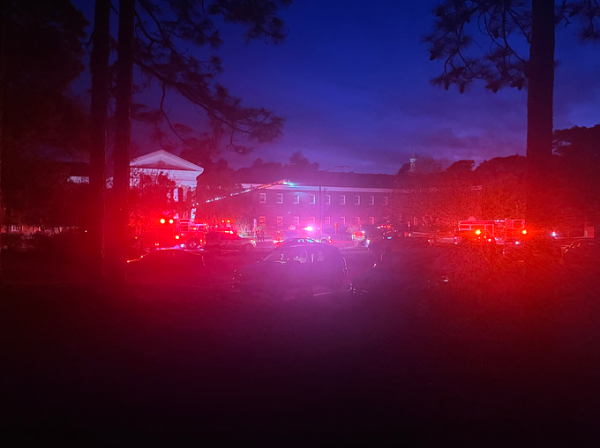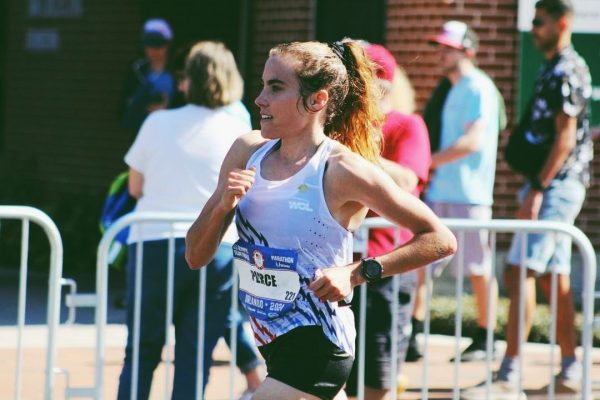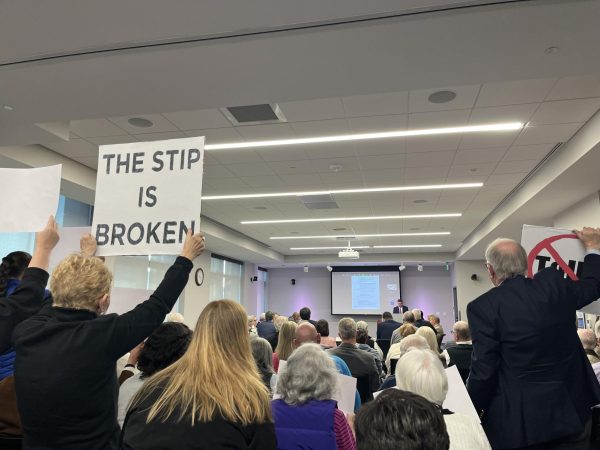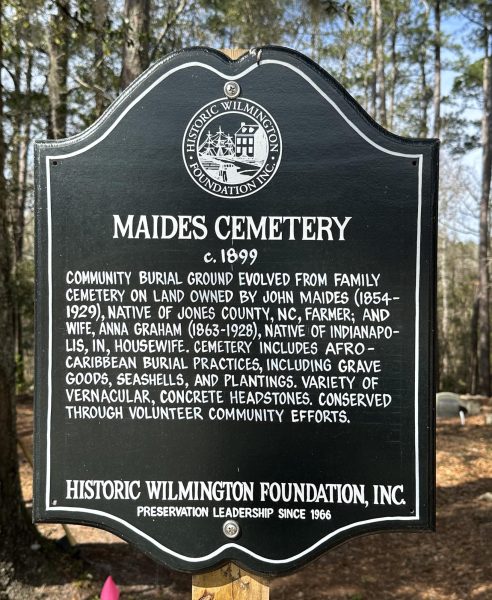Student veteran showcases love for swordplay
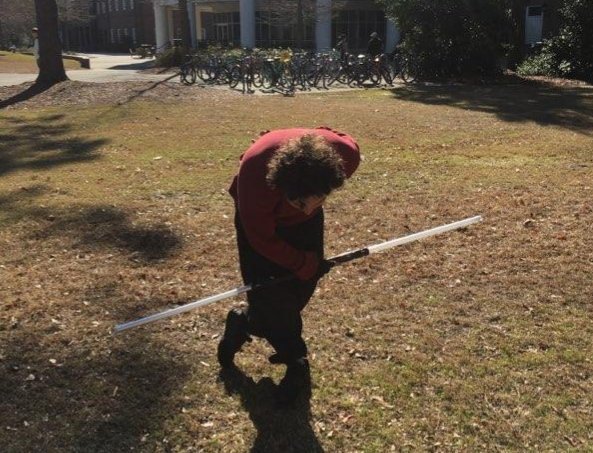
Martin Brown/The Seahawk
Beau Carlson, double-bladed lightsaber in hand, takes a bow outside Fisher Student Center on Feb. 6
February 6, 2019
On Monday mornings, as campus slowly comes to life, one student stands alone in a patch of grass outside Randall Library.
In his bag are three soft-edged swords. He has just gotten out of his first class of the week and now he is here to do what he loves: he pulls out his samurai sword and begins to practice.
Beau Carlson is a 22-year-old retired U.S. Army medic. He is at UNC Wilmington pursuing his education after medical retirement from the military.
He has been practicing with swords since he was very young. His parents were members of the Society for Creative Anachronism (SCA), a group which organizes events like Renaissance fairs.
Carlson took an early interest in traditional Japanese sword fighting but was unable to officially practice. His was a military family, which meant moving every two years. Martial arts dojos base their levels of training on consistent study under a master, meaning that Beau could never officially reach black belt.
Instead, he chose to study on his own. He would disappear with books and practice moves which he learned from instructional texts, historic diagrams, or old fighting movies.
He is a big fan of Bruce Lee movies.
“I could watch old martial arts movies forever,” Carlson said. “It’s like watching dancers or Cirque Du Soleil when you’re like, ‘I don’t even know how you do that with your body.’”
That’s what drew him to it. He wanted to learn to do the impossibly beautiful movements he saw on screen, and he knew he could always keep improving. He called it his “goal that doesn’t end.”
When he left high school, Carlson knew that he wanted to enter military service. He joined the army and after a series of aptitude tests became a medic.
Strictly speaking, it is not permitted to have any close combat weapons in your barracks while on deployment. Some soldiers will hide prohibited personal effects, but even if he could have found somewhere to hide a full-length Japanese katana, Carlson had no hope.
People watched him practice, so keeping the sword a secret was not an option. It wasn’t like hiding a pocket knife. So, Carlson did it by the book.
“You have to put them in the armory, next to your firearm,” Carlson said, adding that, “this can make practicing annoying,”
Any time he wanted to practice, he had to go check out his sword. This made practicing impossible, by the time wasted alone. He was spending more time filling out papers than practicing.
After a while of this, Carlson was practicing with sticks when someone gave him an idea. All he needed was a little faith. A friend had recently informed him of a newly recognized religious designation.
“So, hypothetically if one were so inclined, he could change his dog tags to say Jedi on them,” Carlson said through a smirk.
He had his official religious designation changed to Jedi, the religious movement spawned by the “Star Wars” films. He went so far as to build a lightsaber and make a Jedi Knight robe using a sewing machine loaned to him by an officer’s wife.
After this change, his bladeless swords were marked down as religious objects and his weekly practice with them was a religious ceremony. Carlson even says that there was a Jedi Chaplin, though he never made use of his services.
A recruit practicing Japanese sword art on a basketball court is the sort of thing that draws attention, but Carlson didn’t mind. He said he was teased by others saying he had been grown in a lab as a failed experiment or that he was an alien studying human culture, but Carlson shrugs it off.
“I’m clearly no stranger to being in on the joke,” he said, motioning to his long coat and hat.
Carlson got used to standing out from years of being dumped into new schools, but somewhere along the way he got tired of trying to downplay who he was.
At a nearby table sits Alex Dobrzynski, a chemistry student who is pouring over her textbooks while occasionally looking up to watch Carlson move.
“I don’t have classes on Monday, Wednesday, or Friday, so I usually come to the library on those days,” Dobrzynski said. It’s on those mornings that Carlson practices, so Dobrzynski has become familiar with the sight of him.
“I always see him when I’m biking, and I think it’s absolutely fascinating what he’s doing,” she said. “I’m not sure if I would feel comfortable leaving my house and being in public while doing something like that, but I also think it’s bold and inspiring to say, ‘I’m just gonna come into this big, open patch of grass and practice my martial arts.’
“I respect that — having to come out of your shell. If someone was out here doing yoga, we wouldn’t really think twice about it.”
Dobrzynski isn’t alone in this thought. Other students have taken notice of Carlson and the majority of them seem to agree that having students bring their unusual passions is what college is all about.
“It’s the same thing as people playing hacky sack. Everyone has their own thing,” said student Lily McGrath.
For a full hour, three days a week Carlson is there for anyone to see. But he isn’t concerned with them.
“It doesn’t matter if anyone’s watching at the end of the day,” Carlson said. “If I had a problem with people watching, I might as well go practice in a closet.”
He doesn’t notice them. He is somewhere else. As electro-swing music or some audiobook plays in his ears, he lets himself slow down and think only about his movements.
“If I don’t do it, and don’t believe in myself enough to do it, why am I wasting my time on this thing?” Carlson said. “If that’s who you are, you should do it, until it isn’t who you are, and then you should do something else.”
